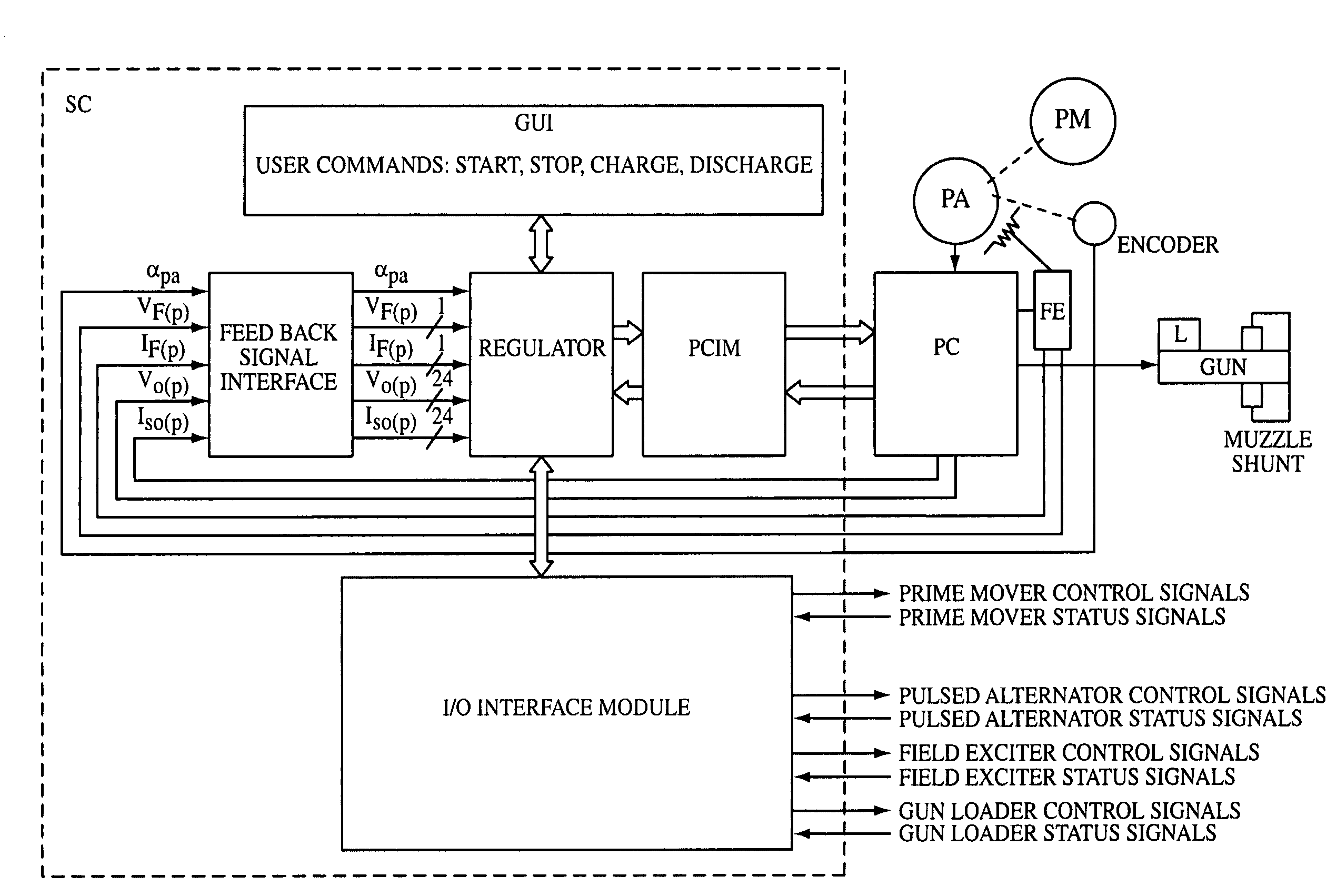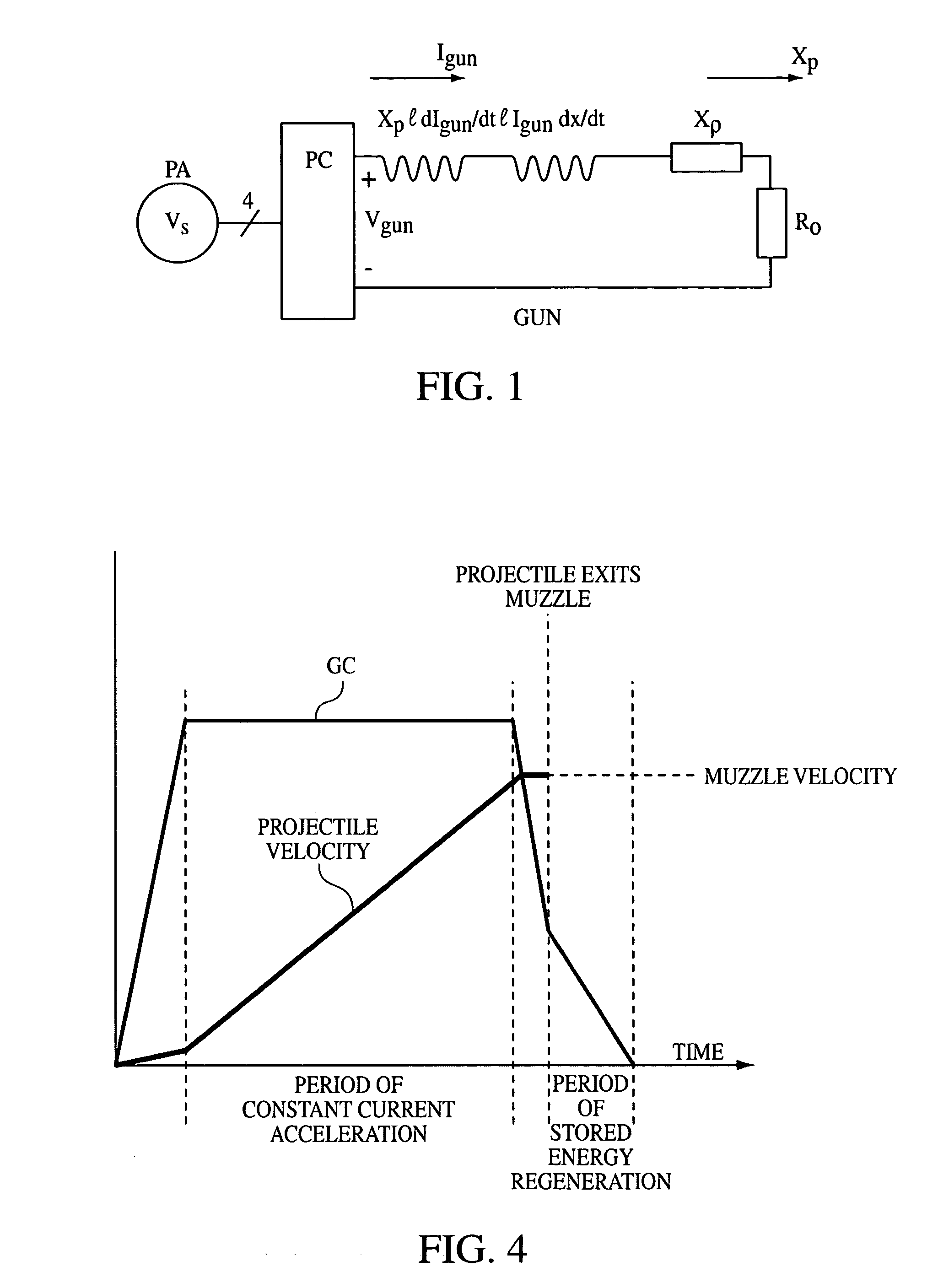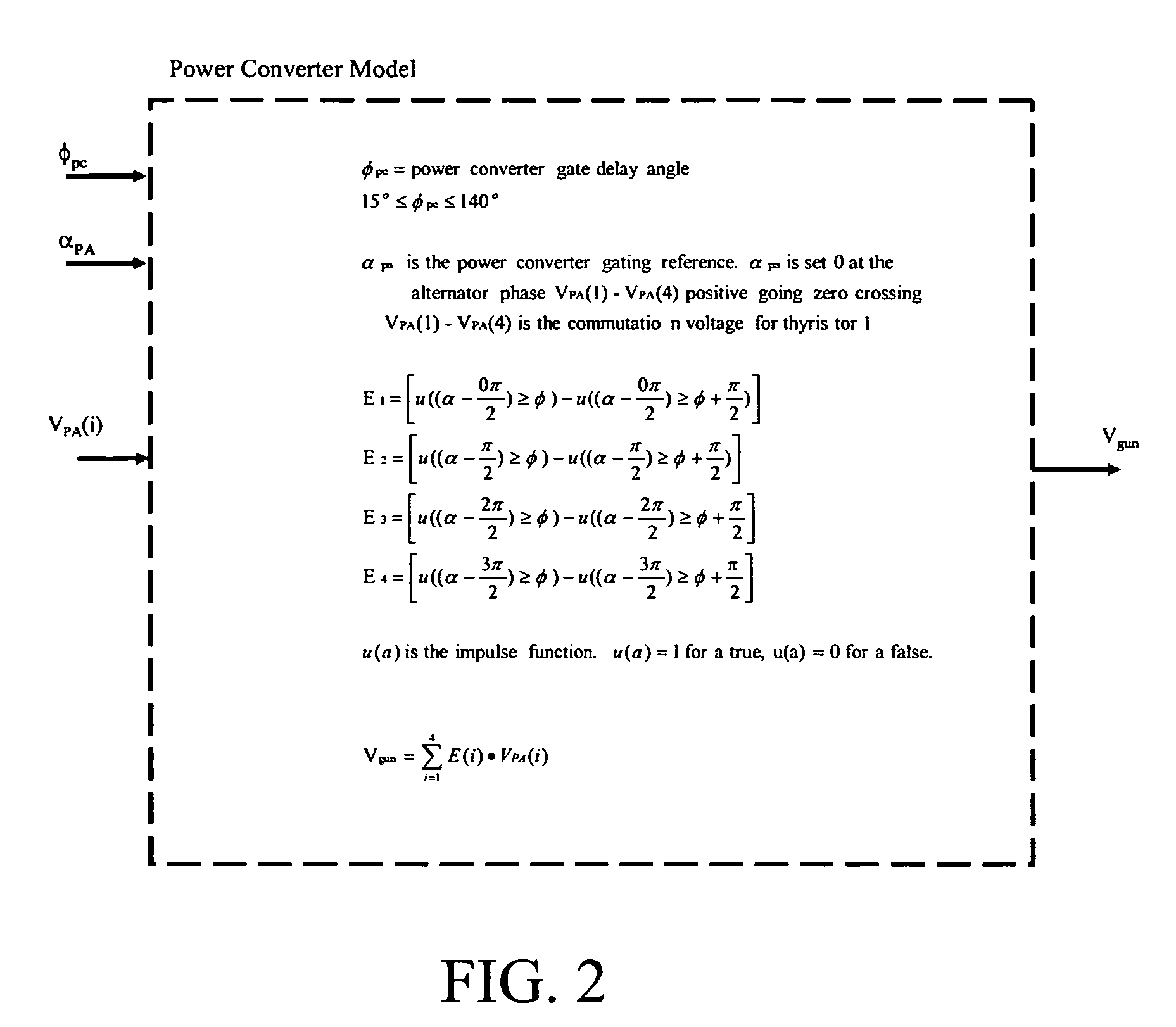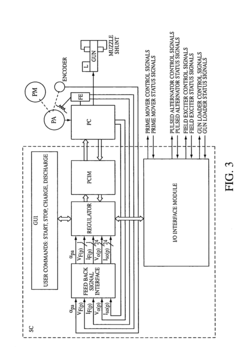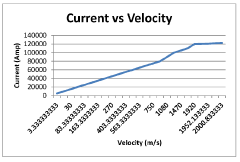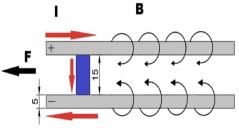Parallel Development: Rail Guns and Hyper-Loop Technology
AUG 6, 20259 MIN READ
Generate Your Research Report Instantly with AI Agent
Patsnap Eureka helps you evaluate technical feasibility & market potential.
Rail Gun and Hyperloop Background
Rail guns and hyperloop technology represent two innovative transportation concepts that have captured the imagination of engineers and futurists alike. While seemingly distinct, these technologies share a common thread of pushing the boundaries of conventional transportation methods.
Rail guns, originally conceived as military weapons, utilize electromagnetic forces to accelerate projectiles to extremely high velocities. The concept dates back to the early 20th century, with significant advancements made during World War II. In recent decades, research has shifted towards exploring rail guns for civilian applications, particularly in the realm of space launch systems and long-distance cargo transport.
Hyperloop technology, on the other hand, is a more recent innovation proposed by entrepreneur Elon Musk in 2013. This transportation system envisions pods traveling through low-pressure tubes at near-supersonic speeds, promising to revolutionize long-distance travel. The hyperloop concept builds upon earlier ideas of vacuum tube transport, combining them with modern technologies to create a potentially viable high-speed transportation alternative.
Both rail guns and hyperloop systems rely on advanced electromagnetic principles to achieve their goals. Rail guns use powerful electromagnetic fields to propel projectiles, while hyperloop designs often incorporate magnetic levitation to reduce friction and enable high-speed travel. This shared reliance on electromagnetic technology creates an interesting parallel in their development trajectories.
The evolution of these technologies has been driven by advancements in materials science, power systems, and control mechanisms. For rail guns, progress has been made in developing more durable rails and more efficient power supplies. Hyperloop development has focused on creating low-pressure environments, optimizing pod designs, and refining propulsion systems.
As research continues, both technologies face similar challenges in scaling up from prototypes to practical, large-scale implementations. Issues such as heat management, energy efficiency, and infrastructure requirements are common hurdles that researchers in both fields are working to overcome.
The potential applications of these technologies extend beyond their primary purposes. Rail gun technology could find use in industrial processes requiring high-velocity impacts, while hyperloop principles might be adapted for high-speed freight transport or even underwater travel. This versatility highlights the broader impact these innovations could have on various sectors of transportation and industry.
Rail guns, originally conceived as military weapons, utilize electromagnetic forces to accelerate projectiles to extremely high velocities. The concept dates back to the early 20th century, with significant advancements made during World War II. In recent decades, research has shifted towards exploring rail guns for civilian applications, particularly in the realm of space launch systems and long-distance cargo transport.
Hyperloop technology, on the other hand, is a more recent innovation proposed by entrepreneur Elon Musk in 2013. This transportation system envisions pods traveling through low-pressure tubes at near-supersonic speeds, promising to revolutionize long-distance travel. The hyperloop concept builds upon earlier ideas of vacuum tube transport, combining them with modern technologies to create a potentially viable high-speed transportation alternative.
Both rail guns and hyperloop systems rely on advanced electromagnetic principles to achieve their goals. Rail guns use powerful electromagnetic fields to propel projectiles, while hyperloop designs often incorporate magnetic levitation to reduce friction and enable high-speed travel. This shared reliance on electromagnetic technology creates an interesting parallel in their development trajectories.
The evolution of these technologies has been driven by advancements in materials science, power systems, and control mechanisms. For rail guns, progress has been made in developing more durable rails and more efficient power supplies. Hyperloop development has focused on creating low-pressure environments, optimizing pod designs, and refining propulsion systems.
As research continues, both technologies face similar challenges in scaling up from prototypes to practical, large-scale implementations. Issues such as heat management, energy efficiency, and infrastructure requirements are common hurdles that researchers in both fields are working to overcome.
The potential applications of these technologies extend beyond their primary purposes. Rail gun technology could find use in industrial processes requiring high-velocity impacts, while hyperloop principles might be adapted for high-speed freight transport or even underwater travel. This versatility highlights the broader impact these innovations could have on various sectors of transportation and industry.
Market Potential Analysis
The market potential for rail guns and Hyperloop technology is significant, driven by increasing demand for advanced transportation systems and next-generation defense capabilities. These technologies represent disruptive innovations in their respective sectors, offering substantial growth opportunities.
In the defense sector, rail guns are attracting considerable attention due to their potential to revolutionize naval warfare and long-range artillery. The global naval guns market, which includes rail guns, is projected to grow steadily over the next decade. This growth is fueled by increasing defense budgets in major economies and the need for more advanced, cost-effective weapon systems. Rail guns offer advantages such as increased range, higher projectile velocity, and lower cost per shot compared to traditional naval guns, making them an attractive option for naval modernization programs.
The Hyperloop market, while still in its early stages, shows immense potential for disrupting long-distance transportation. As urbanization continues and the need for efficient, sustainable transportation grows, Hyperloop technology could address many challenges faced by traditional high-speed rail and air travel. The global Hyperloop technology market is expected to experience rapid growth in the coming years, with several companies and governments investing in research and development.
Key factors driving the market potential for Hyperloop include reduced travel times, lower operational costs compared to traditional high-speed rail, and minimal environmental impact. The technology's ability to connect major urban centers quickly could reshape economic landscapes, potentially creating new business corridors and enhancing regional integration.
Both rail guns and Hyperloop face significant technical and regulatory challenges that could impact their market adoption. For rail guns, concerns about power requirements, barrel longevity, and integration with existing naval systems need to be addressed. Hyperloop technology must overcome challenges related to safety, infrastructure costs, and regulatory approvals before widespread commercial deployment.
Despite these challenges, the potential applications of these technologies extend beyond their primary markets. Rail gun technology could find applications in space launch systems, while Hyperloop concepts could influence the development of urban transit systems and freight transportation.
Geographically, North America and Asia-Pacific are expected to be key markets for both technologies. The United States is leading in rail gun development, while countries like China and India are showing strong interest in Hyperloop technology for their transportation needs.
In conclusion, the market potential for rail guns and Hyperloop technology is substantial, with both offering transformative capabilities in their respective fields. As technical challenges are overcome and regulatory frameworks evolve, these technologies are poised to create new market opportunities and reshape existing industries.
In the defense sector, rail guns are attracting considerable attention due to their potential to revolutionize naval warfare and long-range artillery. The global naval guns market, which includes rail guns, is projected to grow steadily over the next decade. This growth is fueled by increasing defense budgets in major economies and the need for more advanced, cost-effective weapon systems. Rail guns offer advantages such as increased range, higher projectile velocity, and lower cost per shot compared to traditional naval guns, making them an attractive option for naval modernization programs.
The Hyperloop market, while still in its early stages, shows immense potential for disrupting long-distance transportation. As urbanization continues and the need for efficient, sustainable transportation grows, Hyperloop technology could address many challenges faced by traditional high-speed rail and air travel. The global Hyperloop technology market is expected to experience rapid growth in the coming years, with several companies and governments investing in research and development.
Key factors driving the market potential for Hyperloop include reduced travel times, lower operational costs compared to traditional high-speed rail, and minimal environmental impact. The technology's ability to connect major urban centers quickly could reshape economic landscapes, potentially creating new business corridors and enhancing regional integration.
Both rail guns and Hyperloop face significant technical and regulatory challenges that could impact their market adoption. For rail guns, concerns about power requirements, barrel longevity, and integration with existing naval systems need to be addressed. Hyperloop technology must overcome challenges related to safety, infrastructure costs, and regulatory approvals before widespread commercial deployment.
Despite these challenges, the potential applications of these technologies extend beyond their primary markets. Rail gun technology could find applications in space launch systems, while Hyperloop concepts could influence the development of urban transit systems and freight transportation.
Geographically, North America and Asia-Pacific are expected to be key markets for both technologies. The United States is leading in rail gun development, while countries like China and India are showing strong interest in Hyperloop technology for their transportation needs.
In conclusion, the market potential for rail guns and Hyperloop technology is substantial, with both offering transformative capabilities in their respective fields. As technical challenges are overcome and regulatory frameworks evolve, these technologies are poised to create new market opportunities and reshape existing industries.
Technical Challenges
The parallel development of rail guns and Hyperloop technology presents significant technical challenges that require innovative solutions. Both technologies push the boundaries of current engineering capabilities, albeit in different domains.
Rail guns face several critical hurdles in their development. The primary challenge lies in managing the enormous electrical currents required to generate the electromagnetic forces necessary for projectile acceleration. This demand for high-power electrical systems often leads to rapid wear and tear of the gun's components, particularly the rails. The intense heat and friction generated during firing can cause material degradation, limiting the weapon's lifespan and reliability.
Another major obstacle for rail guns is the development of projectiles capable of withstanding the extreme forces involved in electromagnetic acceleration. These projectiles must maintain structural integrity under immense stress while also being designed for optimal aerodynamics and target impact. Additionally, the precision guidance of these high-velocity projectiles presents a significant technical challenge, especially for long-range targeting.
Hyperloop technology, on the other hand, faces its own set of unique challenges. One of the primary difficulties is maintaining a near-vacuum environment within the transportation tube over long distances. This requires advanced sealing technologies and robust pumping systems to continuously evacuate air from the tube. Any breach in this vacuum could result in catastrophic failure of the entire system.
The development of a reliable levitation system for Hyperloop pods is another critical challenge. While magnetic levitation is a promising solution, it requires precise control and significant power input. Ensuring stable levitation at high speeds, particularly during acceleration and deceleration phases, remains a complex engineering problem.
Thermal management is a significant issue for both rail guns and Hyperloop systems. In rail guns, the heat generated by electrical resistance and friction must be efficiently dissipated to prevent damage to the weapon. For Hyperloop, managing the heat generated by the pod's propulsion system and that created by air friction (even in a low-pressure environment) is crucial for passenger comfort and system efficiency.
Safety considerations pose additional technical challenges for both technologies. For rail guns, this includes developing robust power storage and delivery systems that can handle the extreme electrical loads safely. In the case of Hyperloop, ensuring passenger safety during normal operation and in emergency scenarios, such as rapid decompression or sudden stops, requires innovative engineering solutions.
The control systems for both technologies represent another area of significant technical challenge. Rail guns require sophisticated fire control systems that can account for various factors affecting projectile trajectory. Hyperloop systems need advanced control algorithms to manage pod movement, maintain proper spacing between vehicles, and coordinate with multiple stations along the route.
In conclusion, while rail guns and Hyperloop technology may seem disparate, they share common challenges in pushing the limits of current engineering capabilities. Overcoming these technical hurdles will require continued research, innovative materials science, and advanced control systems, paving the way for potential breakthroughs in both military and civilian transportation sectors.
Rail guns face several critical hurdles in their development. The primary challenge lies in managing the enormous electrical currents required to generate the electromagnetic forces necessary for projectile acceleration. This demand for high-power electrical systems often leads to rapid wear and tear of the gun's components, particularly the rails. The intense heat and friction generated during firing can cause material degradation, limiting the weapon's lifespan and reliability.
Another major obstacle for rail guns is the development of projectiles capable of withstanding the extreme forces involved in electromagnetic acceleration. These projectiles must maintain structural integrity under immense stress while also being designed for optimal aerodynamics and target impact. Additionally, the precision guidance of these high-velocity projectiles presents a significant technical challenge, especially for long-range targeting.
Hyperloop technology, on the other hand, faces its own set of unique challenges. One of the primary difficulties is maintaining a near-vacuum environment within the transportation tube over long distances. This requires advanced sealing technologies and robust pumping systems to continuously evacuate air from the tube. Any breach in this vacuum could result in catastrophic failure of the entire system.
The development of a reliable levitation system for Hyperloop pods is another critical challenge. While magnetic levitation is a promising solution, it requires precise control and significant power input. Ensuring stable levitation at high speeds, particularly during acceleration and deceleration phases, remains a complex engineering problem.
Thermal management is a significant issue for both rail guns and Hyperloop systems. In rail guns, the heat generated by electrical resistance and friction must be efficiently dissipated to prevent damage to the weapon. For Hyperloop, managing the heat generated by the pod's propulsion system and that created by air friction (even in a low-pressure environment) is crucial for passenger comfort and system efficiency.
Safety considerations pose additional technical challenges for both technologies. For rail guns, this includes developing robust power storage and delivery systems that can handle the extreme electrical loads safely. In the case of Hyperloop, ensuring passenger safety during normal operation and in emergency scenarios, such as rapid decompression or sudden stops, requires innovative engineering solutions.
The control systems for both technologies represent another area of significant technical challenge. Rail guns require sophisticated fire control systems that can account for various factors affecting projectile trajectory. Hyperloop systems need advanced control algorithms to manage pod movement, maintain proper spacing between vehicles, and coordinate with multiple stations along the route.
In conclusion, while rail guns and Hyperloop technology may seem disparate, they share common challenges in pushing the limits of current engineering capabilities. Overcoming these technical hurdles will require continued research, innovative materials science, and advanced control systems, paving the way for potential breakthroughs in both military and civilian transportation sectors.
Current Technical Solutions
01 Electromagnetic propulsion systems for rail guns and hyperloop
Electromagnetic propulsion systems are crucial for both rail guns and hyperloop technology. These systems use electromagnetic forces to accelerate projectiles or vehicles to high speeds. In rail guns, electromagnetic fields propel conductive projectiles along a pair of metal rails. For hyperloop, linear induction motors or similar electromagnetic systems are used to propel pods through low-pressure tubes, achieving high-speed transportation.- Electromagnetic propulsion systems for rail guns and hyperloop: Electromagnetic propulsion systems are crucial for both rail guns and hyperloop technology. These systems use electromagnetic forces to accelerate projectiles or vehicles to high speeds. In rail guns, electromagnetic fields are used to launch projectiles, while in hyperloop, they propel passenger pods through low-pressure tubes. The technology involves advanced power management, superconducting materials, and precise control systems to achieve efficient and rapid acceleration.
- Vacuum tube and low-pressure environments for hyperloop: Hyperloop technology relies on low-pressure environments within sealed tubes to reduce air resistance and enable high-speed travel. This involves creating and maintaining near-vacuum conditions in long tubes, developing airlocks for pod entry and exit, and implementing safety systems to manage pressure differentials. The design also includes considerations for thermal management and emergency depressurization scenarios.
- Power management and energy storage for rail guns and hyperloop: Efficient power management and energy storage systems are essential for both rail guns and hyperloop technology. These systems require high-capacity energy storage, rapid discharge capabilities for rail guns, and sustainable power distribution for hyperloop operations. Advanced battery technologies, supercapacitors, and smart grid integration are key components in managing the enormous power demands of these technologies.
- Guidance and control systems for hyperloop pods and rail gun projectiles: Precise guidance and control systems are critical for the accurate operation of hyperloop pods and rail gun projectiles. These systems involve advanced sensors, real-time data processing, and adaptive control algorithms to maintain stability and trajectory. For hyperloop, this includes managing pod alignment within the tube, while for rail guns, it focuses on projectile guidance and impact accuracy.
- Safety and emergency systems for hyperloop technology: Comprehensive safety and emergency systems are paramount in hyperloop technology to ensure passenger safety. This includes developing robust pod designs, emergency braking systems, rapid deceleration mechanisms, and evacuation procedures. Additionally, the technology incorporates fail-safe measures, redundant systems, and real-time monitoring to detect and respond to potential hazards or system failures during high-speed travel.
02 Power management and energy storage for high-speed systems
Efficient power management and energy storage are essential for both rail guns and hyperloop technology. These systems require high-power electrical systems to operate effectively. Advanced power management techniques, including energy recovery and storage systems, are employed to optimize energy usage and ensure consistent performance. Innovations in battery technology and capacitor systems play a crucial role in these applications.Expand Specific Solutions03 Guidance and control systems for precision and safety
Sophisticated guidance and control systems are critical for the accurate operation of rail guns and the safe navigation of hyperloop pods. These systems incorporate advanced sensors, real-time data processing, and feedback mechanisms to ensure precise trajectory control for rail gun projectiles and maintain stability and safety for hyperloop vehicles traveling at high speeds through low-pressure environments.Expand Specific Solutions04 Materials and structural design for high-speed applications
Advanced materials and structural designs are crucial for withstanding the extreme conditions in rail guns and hyperloop systems. This includes developing materials that can endure high temperatures and pressures in rail guns, as well as lightweight yet strong materials for hyperloop pods and tubes. Innovative structural designs are employed to optimize aerodynamics, reduce friction, and enhance overall system efficiency.Expand Specific Solutions05 Integration of AI and machine learning in operation and maintenance
Artificial intelligence and machine learning technologies are increasingly being integrated into rail gun and hyperloop systems. These technologies enhance system performance, optimize operations, and improve maintenance procedures. AI algorithms can be used for predictive maintenance, real-time adjustments in hyperloop pod operations, and improving the accuracy and efficiency of rail gun targeting systems.Expand Specific Solutions
Key Industry Players
The parallel development of rail guns and Hyperloop technology represents an emerging and highly competitive field at the intersection of advanced transportation and defense systems. This sector is in its early stages, with significant potential for growth but still facing technological challenges. The market size is projected to expand rapidly as both technologies mature, driven by increasing demand for high-speed transportation and advanced military capabilities. Companies like BYD, ArcelorMittal, and NVIDIA are leveraging their expertise in materials, propulsion systems, and AI to advance these technologies. While rail guns are more developed, with military applications already in testing, Hyperloop remains largely conceptual, with several companies and research institutions racing to overcome engineering hurdles and prove commercial viability.
International Business Machines Corp.
Technical Solution: IBM's approach to parallel development in rail guns and Hyperloop technology leverages their expertise in quantum computing and AI. For rail guns, IBM's Power Systems are used for high-performance computing in electromagnetic simulations and materials science research. Their quantum computing technology is being explored for optimizing the complex electromagnetic interactions in rail gun systems[10]. In Hyperloop development, IBM's Watson AI is utilized for predictive maintenance, passenger flow optimization, and safety monitoring. Their cloud-based quantum computing services are being investigated for solving complex optimization problems in Hyperloop route planning and pod scheduling[11]. IBM's SPSS statistical software is employed for analyzing vast amounts of data generated during Hyperloop test runs. Additionally, IBM's blockchain technology is being explored for secure and transparent ticketing and passenger identification systems in future Hyperloop networks[12].
Strengths: Cutting-edge quantum computing technology, robust AI and analytics capabilities, and a strong focus on enterprise-level solutions. Weaknesses: Less focus on specialized hardware for specific applications compared to some competitors.
NVIDIA Corp.
Technical Solution: NVIDIA has been actively involved in developing parallel computing technologies that can be applied to both rail guns and Hyperloop systems. For rail guns, NVIDIA's GPUs are used in electromagnetic simulations and power management systems. Their CUDA parallel computing platform enables real-time calculations of electromagnetic fields and projectile trajectories[1]. In Hyperloop technology, NVIDIA's AI and deep learning capabilities are utilized for route optimization, passenger flow prediction, and safety monitoring. Their DGX systems provide the computational power needed for complex fluid dynamics simulations of Hyperloop pods traveling through low-pressure tubes[2]. NVIDIA's latest A100 Tensor Core GPU offers up to 600 teraflops of AI performance, which can significantly accelerate the design and testing phases of both rail gun and Hyperloop projects[3].
Strengths: Unparalleled GPU performance for parallel computing tasks, extensive AI and deep learning capabilities, and a robust ecosystem of software tools. Weaknesses: High power consumption of GPU clusters and potential over-reliance on specialized hardware.
Core Innovations
Closed loop defined profile current controller for electromagnetic rail gun applications
PatentInactiveUS7357128B1
Innovation
- A closed loop control system using state space control concepts, with a pulsed alternator observer, gun observer, and current compensator to regulate energy transfer and control muzzle velocity by transitioning the system through defined state transitions, enabling precise control of the rail gun current and projectile acceleration.
Design of electromagnetic rail gun for aerospace applications
PatentPendingIN202241070716A
Innovation
- Designing a rail gun with superconductive rails and varying the distance between them to analyze the current required to achieve a projectile velocity of 2000 m/s, using established electromagnetic principles like Fleming's Right-hand rule and Biot-Savart's law, and calculating magnetic fields and forces to determine optimal current and rail configurations.
Environmental Impact
The environmental impact of parallel development in rail guns and Hyperloop technology is a critical consideration as these advanced transportation systems progress. Both technologies aim to revolutionize long-distance travel and cargo transport, but their environmental implications differ significantly.
Rail guns, primarily developed for military applications, have potential civilian uses in launching payloads into space or as a high-speed transportation method. The primary environmental benefit of rail guns is their lack of chemical propellants, reducing the emission of harmful gases and particulates associated with traditional rocket launches. However, the massive energy requirements for rail gun operation could lead to increased electricity demand, potentially straining power grids and indirectly contributing to greenhouse gas emissions if the energy source is not renewable.
Hyperloop technology, on the other hand, is designed as a sustainable alternative to current long-distance transportation methods. Its enclosed tube system significantly reduces air resistance, allowing for high-speed travel with minimal energy consumption. This efficiency translates to lower carbon emissions per passenger-mile compared to conventional modes of transport like airplanes or cars. Additionally, Hyperloop systems can be powered by renewable energy sources, further minimizing their carbon footprint.
The construction of Hyperloop infrastructure, however, poses environmental challenges. The extensive network of tubes and supporting structures required for a Hyperloop system could lead to habitat fragmentation and disruption of local ecosystems. The production of materials for these structures, such as steel and concrete, also carries a significant carbon cost. Mitigation strategies, such as wildlife corridors and the use of recycled or low-carbon materials, would be crucial in addressing these concerns.
Both technologies have the potential to reduce overall transportation-related emissions by offering more efficient alternatives to current methods. Rail guns could potentially replace some rocket launches, while Hyperloop could substitute for short to medium-haul flights and long-distance road travel. This shift could lead to a substantial reduction in global transportation emissions, a key factor in combating climate change.
Noise pollution is another environmental aspect to consider. Rail guns produce significant acoustic and electromagnetic disturbances, which could have adverse effects on wildlife and human populations if not properly managed. Hyperloop, being enclosed in tubes, has the advantage of minimal noise pollution during operation, though construction noise would need to be addressed.
In conclusion, while both rail guns and Hyperloop technology offer potential environmental benefits through increased efficiency and reduced emissions, careful planning and implementation are necessary to mitigate their negative environmental impacts. Sustainable development practices, renewable energy integration, and ecosystem preservation strategies should be integral to the advancement of these technologies.
Rail guns, primarily developed for military applications, have potential civilian uses in launching payloads into space or as a high-speed transportation method. The primary environmental benefit of rail guns is their lack of chemical propellants, reducing the emission of harmful gases and particulates associated with traditional rocket launches. However, the massive energy requirements for rail gun operation could lead to increased electricity demand, potentially straining power grids and indirectly contributing to greenhouse gas emissions if the energy source is not renewable.
Hyperloop technology, on the other hand, is designed as a sustainable alternative to current long-distance transportation methods. Its enclosed tube system significantly reduces air resistance, allowing for high-speed travel with minimal energy consumption. This efficiency translates to lower carbon emissions per passenger-mile compared to conventional modes of transport like airplanes or cars. Additionally, Hyperloop systems can be powered by renewable energy sources, further minimizing their carbon footprint.
The construction of Hyperloop infrastructure, however, poses environmental challenges. The extensive network of tubes and supporting structures required for a Hyperloop system could lead to habitat fragmentation and disruption of local ecosystems. The production of materials for these structures, such as steel and concrete, also carries a significant carbon cost. Mitigation strategies, such as wildlife corridors and the use of recycled or low-carbon materials, would be crucial in addressing these concerns.
Both technologies have the potential to reduce overall transportation-related emissions by offering more efficient alternatives to current methods. Rail guns could potentially replace some rocket launches, while Hyperloop could substitute for short to medium-haul flights and long-distance road travel. This shift could lead to a substantial reduction in global transportation emissions, a key factor in combating climate change.
Noise pollution is another environmental aspect to consider. Rail guns produce significant acoustic and electromagnetic disturbances, which could have adverse effects on wildlife and human populations if not properly managed. Hyperloop, being enclosed in tubes, has the advantage of minimal noise pollution during operation, though construction noise would need to be addressed.
In conclusion, while both rail guns and Hyperloop technology offer potential environmental benefits through increased efficiency and reduced emissions, careful planning and implementation are necessary to mitigate their negative environmental impacts. Sustainable development practices, renewable energy integration, and ecosystem preservation strategies should be integral to the advancement of these technologies.
Safety and Regulations
The development of rail guns and Hyperloop technology brings unprecedented challenges in terms of safety and regulations. These cutting-edge transportation systems require a comprehensive regulatory framework to ensure public safety and operational reliability.
For rail guns, the primary safety concerns revolve around the immense electromagnetic forces and high-velocity projectiles. Strict protocols must be established for handling the powerful electromagnetic fields generated during operation, which could pose risks to personnel and nearby electronic equipment. Additionally, containment measures for projectile impact and potential misfires need to be rigorously defined and enforced.
Hyperloop technology, while promising revolutionary speeds in passenger and cargo transport, presents its own set of safety challenges. The vacuum-sealed tubes and high-speed capsules necessitate fail-safe mechanisms for emergency situations, such as rapid depressurization or power failures. Regulations must address passenger safety during normal operations and in the event of system malfunctions.
Both technologies require the development of new safety standards that go beyond existing transportation regulations. This includes guidelines for structural integrity, materials testing, and operational procedures. Regulatory bodies will need to collaborate closely with engineers and researchers to establish evidence-based safety thresholds and testing methodologies.
Environmental impact assessments will also play a crucial role in the regulatory landscape for these technologies. The potential effects of electromagnetic emissions from rail guns and the large-scale infrastructure required for Hyperloop systems must be thoroughly evaluated and mitigated through appropriate regulations.
International cooperation will be essential in developing harmonized safety standards and regulations, especially as these technologies have the potential for cross-border applications. Regulatory frameworks must be flexible enough to accommodate technological advancements while maintaining rigorous safety standards.
Public perception and acceptance of these new technologies will heavily influence the regulatory approach. Transparent safety protocols and public education initiatives will be necessary to build trust and support for the implementation of rail guns and Hyperloop systems.
As these technologies progress from experimental stages to practical applications, regulatory bodies must stay ahead of the curve, anticipating potential risks and developing proactive safety measures. This may involve the creation of specialized regulatory agencies or the expansion of existing ones to oversee the unique aspects of rail gun and Hyperloop operations.
For rail guns, the primary safety concerns revolve around the immense electromagnetic forces and high-velocity projectiles. Strict protocols must be established for handling the powerful electromagnetic fields generated during operation, which could pose risks to personnel and nearby electronic equipment. Additionally, containment measures for projectile impact and potential misfires need to be rigorously defined and enforced.
Hyperloop technology, while promising revolutionary speeds in passenger and cargo transport, presents its own set of safety challenges. The vacuum-sealed tubes and high-speed capsules necessitate fail-safe mechanisms for emergency situations, such as rapid depressurization or power failures. Regulations must address passenger safety during normal operations and in the event of system malfunctions.
Both technologies require the development of new safety standards that go beyond existing transportation regulations. This includes guidelines for structural integrity, materials testing, and operational procedures. Regulatory bodies will need to collaborate closely with engineers and researchers to establish evidence-based safety thresholds and testing methodologies.
Environmental impact assessments will also play a crucial role in the regulatory landscape for these technologies. The potential effects of electromagnetic emissions from rail guns and the large-scale infrastructure required for Hyperloop systems must be thoroughly evaluated and mitigated through appropriate regulations.
International cooperation will be essential in developing harmonized safety standards and regulations, especially as these technologies have the potential for cross-border applications. Regulatory frameworks must be flexible enough to accommodate technological advancements while maintaining rigorous safety standards.
Public perception and acceptance of these new technologies will heavily influence the regulatory approach. Transparent safety protocols and public education initiatives will be necessary to build trust and support for the implementation of rail guns and Hyperloop systems.
As these technologies progress from experimental stages to practical applications, regulatory bodies must stay ahead of the curve, anticipating potential risks and developing proactive safety measures. This may involve the creation of specialized regulatory agencies or the expansion of existing ones to oversee the unique aspects of rail gun and Hyperloop operations.
Unlock deeper insights with Patsnap Eureka Quick Research — get a full tech report to explore trends and direct your research. Try now!
Generate Your Research Report Instantly with AI Agent
Supercharge your innovation with Patsnap Eureka AI Agent Platform!
